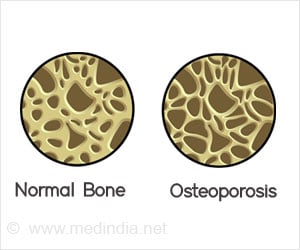Researchers have found that achieving the UN set targets for six important health risks by 2025 can save up to 37 million deaths caused by cancers, diabetes, lung disease and cardiovascular disease.

In 2011, the UN General Assembly agreed to reduce deaths from the big-four chronic diseases. The World Health Organisation (WHO) created targets for both premature deaths from these chronic diseases and their key risk factors like smoking, alcohol use, high blood pressure and blood glucose, obesity and salt consumption. The researchers analysed the effects of achieving these targets for risk factor on deaths from the four major chronic diseases.
The study shows that the big-four chronic diseases killed over 28 million people in 2010, a number that is projected to increase to 39 million in 2025 if no new action is taken.
If the six risk factor targets are achieved, the risk of dying prematurely from chronic diseases in 2025 will go down by 22 per cent for men and by 19 per cent for women compared to their 2010 levels. This corresponds to preventing more than 37 million deaths between 2010 and 2025, including 16 million deaths amongst those who are younger than 70 years and whose deaths are considered premature.
Senior author of the study, Professor Majid Ezzati from the MRC-PHE Centre for Environment at Imperial College London's School of Public Health said: "It is possible to achieve most of the desired reduction in deaths from chronic diseases by tackling a small number of preventable risk factors."
The current global targets include a 30 per cent reduction in smoking levels, a 10 per cent reduction in alcohol consumption and a 30 per cent reduction in salt in food. The research found that achievement of some targets had bigger impacts than others, with reductions in smoking and blood pressure producing the greatest benefits.
Advertisement
Study lead author, Dr Vasilis Kontis from Imperial College London's School of Public Health said: "Our study demonstrates that the tobacco use target should be more ambitious. Reducing the prevalence of smoking by 50 per cent by 2025 is feasible based on proven policy measures, and should become a global target to avoid millions of premature deaths."
Advertisement
"Our study shows the urgent need for a greater policy push and injection of resources into low-to-middle-income countries to replicate the success stories and to avoid escalating numbers of chronic disease deaths in the poorest countries," he added.
The study also showed that the risk factor targets had different impacts depending on the disease. The greatest impact was on cardiovascular disease and chronic lung disease, with more than a 25 per cent reduction in the risk of premature death from each of these conditions. Importantly, achieving the risk factor targets will also reverse the rising tide of mortality from diabetes.
Source-Eurekalert


![An Introduction - Indian General [Non-Life] Insurance Companies An Introduction - Indian General [Non-Life] Insurance Companies](https://images.medindia.net/patientinfo/120_100/health-insurance21.jpg)





